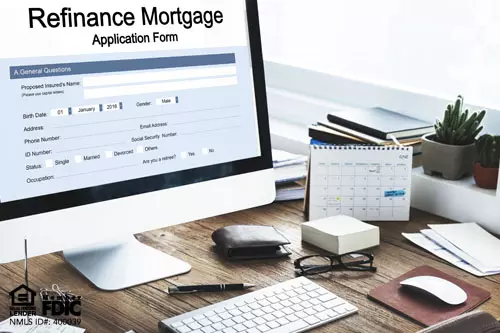You may have bought your home several years ago and now find interest rates are dropping. The market can change over time, and you now have the opportunity to lower your payment or shorten your term. This can save you thousands of dollars in interest that could be used for other financial goals that you have. A rate and term refinancing loan can replace your existing mortgage loan. The principal remaining from your previous mortgage loan stays the same, while the interest rate and duration of the mortgage are adjusted.
Why Get a Rate and Term Refinance?
There are a variety of reasons why you might consider a rate and term refinance on your mortgage loan. One reason could be that you wish to pay off your loan faster and can afford payments on a shorter-term loan. With this scenario, you can build equity in your home on an expedited timeline and enjoy being mortgage-free if you plan to keep the house after it is paid off.
If interest rates have lowered since you took out the original mortgage loan or you want to extend your term so you can lower your monthly mortgage payments, this refinance type is a good option. Another reason that you may wish to do a rate and term refinance is that you want to switch from an adjustable to a fixed-rate loan. Adjustable-rate mortgages can start with a lower interest rate than a fixed-rate loan. But if you'd like to have more financial stability with steady payments, you may want to make the switch.
Consider your goals before getting into the refinancing process. Since there are closing costs, you should calculate the cost versus the benefits of a rate and term refinance.
How the Refinancing Process Works in a Rate and Term Refinance
Once you have decided that a rate and term refinance is the right match for your goal, it's time to start the process. Luckily, it is not as complicated as when you took out your original mortgage loan, although some of the steps are similar.
First, you'll want to shop around for a lender. You don't have to stay with the original lender. Since lenders have some differences in their requirements, getting a more favorable deal elsewhere may be possible.
Once you've identified a few lenders with competitive refinance rates, apply with each. Lenders will look at the same determining factors that they did when you obtained your original mortgage loan. These factors include your assets, income, debt, collateral, and credit.
To minimize the impact on your credit score, complete applications in a short time frame. Upon completing a loan application, you will receive a Loan Estimate document from each lender. In this document, you will find out how much your closing costs are and your interest rate. Compare each of the lenders to determine which terms are the most favorable for your situation.
Generally, you will be allowed to lock in your interest rate. This will guarantee the interest rate on your Loan—estimate document from the impact of market changes that could cause rates to go up. The rate lock period can range between 15 to 60 days (in most cases), depending on the loan type, location, and the lender.
Underwriting your refinance loan will begin once you have locked the rate or let the lender know you are choosing them. The lender will verify your financial information and order an appraisal of the property to determine its value.
Once underwriting has completed reviewing your finances, they will send you a Closing Disclosure a few days before the closing. Please review this document and compare it against your Loan Estimate to ensure that there aren't any unexpected additional costs or increases.
On the closing date, borrowers and a representative from either the lender or title company will be in attendance. You will review the new loan details and sign the closing documents. If you pay closing costs upfront versus rolling them into the loan, you will also make that payment now.
Apply for a rate and term refinance, and let NASB help you reach your financial goal. Our experts are also available at 888-661-1982, to answer your refinancing questions.




